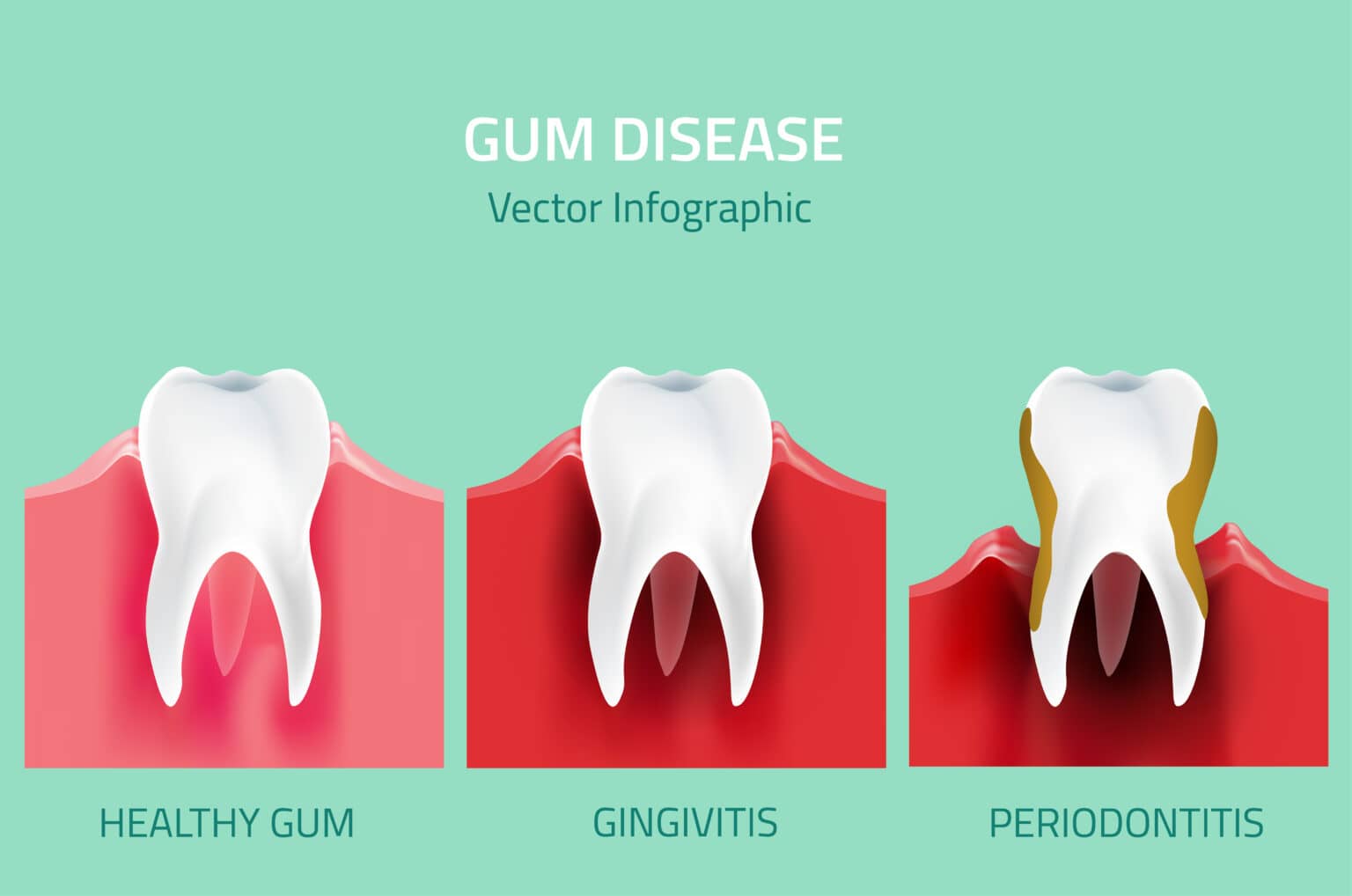Periodontal Treatment Near You
Periodontal treatment is a clinical term for gum disease. This is a progressive condition that can become quite severe if it is left unaddressed, eventually resulting in tooth loss. Fortunately, if it is identified early, dentists can effectively treat it. Our experienced team here at Iona Dental can help you navigate this and provide customized care to improve the health of your smile. If you’re in need of periodontal care or you’d like to learn more about what it entails, please reach out to one of our dentists near you.

Understanding Gum Disease
- Gingivitis: This is the first stage of periodontal disease. Common symptoms include puffy or red gum tissue and some bleeding when you brush. This can be reversed with a deep cleaning and scaling.
- Mild Periodontitis: This stage is characterized by an accumulation of bacteria that harms both the gums and surrounding bones. Pockets form between the tissues and the teeth which can be difficult to brush properly at home.
- Moderate Periodontitis: Your teeth will start to feel loose since the ligaments keeping them in place have been damaged from the bacteria. Persistent bad breath and pus along the gums can also occur.
- Advanced Periodontitis: This is the most serious stage of the disease, often characterized by tooth loss and bone deterioration. At this point, the condition cannot be reversed, only managed with dutifully and proper dental care. You’ll most likely need to visit your dentist in Mississauga regularly so they can keep an eye on your oral health and provide assistance when needed.
Gum Disease Treatments at Iona Dental
Iona Dental offers several non-surgical treatment options to patients dealing with periodontal disease. The ideal treatment depends on the stage of the condition. We’ll evaluate your oral
cavity, take x-rays, and discuss your hygiene habits to identify the best method for your case.
- Root Planing and Scaling – This is the most common form of periodontal treatment. A deep cleaning of your mouth will take place, eliminating all bacteria to prevent your tissues from receding and preserve your tooth roots.
- Medication – Prescription medication is often given to patients who are dealing with a more aggressive form of the disease. The antibiotics will kill the bacteria that have gathered.
- Laser Therapy – Laser therapy may be done if root planing and scaling alone is not enough. This entails removing the unhealthy tissue surrounding your teeth to discourage further pocket formation. Laser therapy is much more comfortable and less invasive than other forms of oral surgery.
If you have questions or concerns about any of this, don’t hesitate to let one of our team members know so we can address it right away. You deserve comfortable dental care, and we work hard to ensure this happens.
Don’t Wait to Get the Care You Need
The team at Iona Dental is here to aid you through this chapter of your oral health journey. We provide quality periodontal treatment near you that will be customized to meet your requirements. So don’t wait! Call (905) 277-0036 to set up a consultation at our clinic and take the first step toward regaining a healthy, functional, and beautiful smile.
